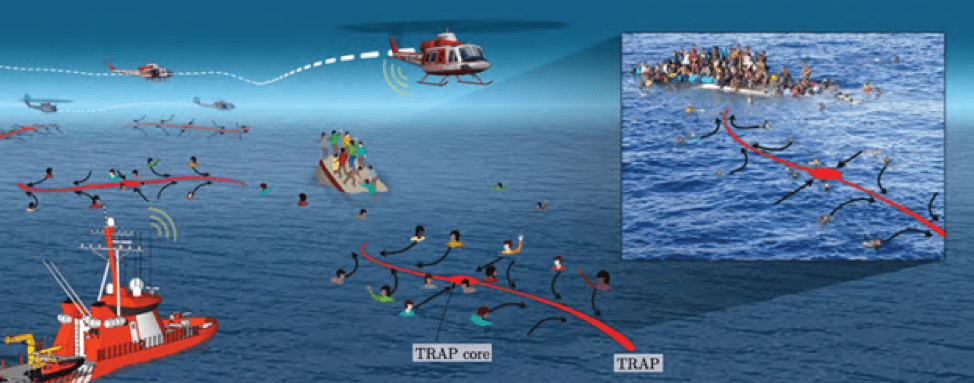Predicting the location of a person lost at sea several hours after the accident is critical for a successful search and rescue operation. TRAPs are structures within the oceanic flow that are hidden to naked-eye inspections of ocean currents and that attract and trap all floating objects, including people lost at sea. Thus, knowing where TRAPs are can save lives.
TRAPs is a new method and it is important to test how well it works in real life. An interdisciplinary team consisting of coastal oceanographers, mathematicians, modelers, engineers, physicists, and U.S. Coast Guard search-and-rescue personnel tested TRAPs in three ocean field experiments mimicking the person-lost-at-sea scenario. The team released drifting buoys and manikins from a boat and then used TRAPs to find and rescue them. TRAPs correctly predicted where the objects were in these experiments. The hope is that TRAPs can be used by the Coast Guard in real search and rescue missions.
This work was true team effort: Mattia Serra (Harvard University) and George Haller (ETH Zuerich) were the developers of TRAPs technique, Pratik Sathe (University of California) helped analyze data to test TRAPs, Irina Rypina (WHOI) took the lead on carrying out field experiments to test TRAPs, Pierre Lermusiaux (MIT) ran a numerical model for predicting ocean currents so that Serra and Sathe could find where TRAPs were, Anthony Kirincich (WHOI) operated a radar system that measured ocean currents during the experiments, Shane Ross (Virginia Tech) released manikins that the team used to mimic people lost at sea, Arthur Allen (U.S. Coast Guard) helped put this work into perspective with real coastguard search and rescue missions, and Thomas Peacock (MIT) brought this team together and was overlooking this entire effort.

